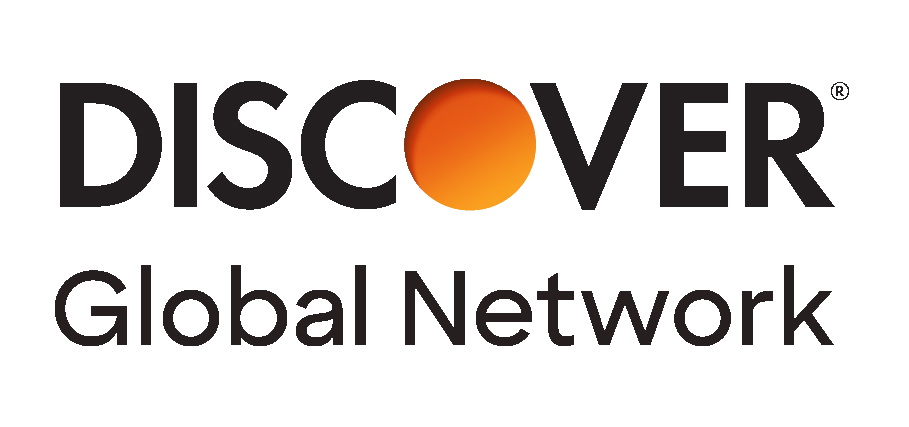What’s next in payments is already here — firms just need to refine and scale it. And when it comes to innovations like embedded finance, the capturable reality is no longer about just slapping a payment button on a website; it’s about creating an ecosystem where trust, sales conversions and even seamless B2B integrations are front and center.
But don’t just take it from us — take it from the 9 leading industry experts PYMNTS sat down with for the series “What’s Next in Payments: Embedded Everything: Priority One for Financial Services in 2025.”
After all, with many of the technological and even regulatory pieces now in place and growing demand for more efficient, embedded payment processes, these experts say the time has come for action and implementation around the three themes of trust building, merchant sales and B2B optimization.
Trust and Ecosystem Building: The Currency of Tomorrow
Trust isn’t just a nice-to-have; it’s the whole ballgame. In embedded finance, merchants and service providers are building their own financial ecosystems that consumers actually want to be a part of. It’s all about creating a seamless, trusted experience where every interaction, whether it’s a payment or a loan offer, feels like it belongs.
 “Embedded finance is about providing those consumers and businesses access to the required financial services … without leaving the app or the portal,” Tribh Grewal, head of FinTech partnerships at Discover Global Network, told PYMNTS.
“Embedded finance is about providing those consumers and businesses access to the required financial services … without leaving the app or the portal,” Tribh Grewal, head of FinTech partnerships at Discover Global Network, told PYMNTS.
At a more technical level, Grewal explained that embedded finance revolves around how firms deliver data-sharing and open banking to consumers. Open banking is where firms share data. It’s not just your payment data or banking data, but data about you so that firms can develop new use cases.
After all, if consumers feel safe and secure, they’ll keep coming back. Brands that invest in building these ecosystems will see loyalty and engagement skyrocket.
Data and Identity
 Thredd CEO Jim McCarthy explained to PYMNTS that embedded finance will thrive best within defined ecosystems, where payments are at the heart of commerce, and where data flowing within these ecosystems between lenders, consumers, banks and others can help make sound risk management and underwriting decisions. As long as the ecosystem can serve up the right product — at the right point in time, with the right message, underwritten with robust risk management models — repeat usage is more likely than not to occur, McCarthy said.
Thredd CEO Jim McCarthy explained to PYMNTS that embedded finance will thrive best within defined ecosystems, where payments are at the heart of commerce, and where data flowing within these ecosystems between lenders, consumers, banks and others can help make sound risk management and underwriting decisions. As long as the ecosystem can serve up the right product — at the right point in time, with the right message, underwritten with robust risk management models — repeat usage is more likely than not to occur, McCarthy said.
 And you can’t get to what’s next in payments without getting to what’s next in identity. That’s according to Mary Ann Miller, vice president of client experience at Prove Identity, who told PYMNTS that businesses are realizing the real innovation isn’t just in how we pay, but in verifying who is paying.
And you can’t get to what’s next in payments without getting to what’s next in identity. That’s according to Mary Ann Miller, vice president of client experience at Prove Identity, who told PYMNTS that businesses are realizing the real innovation isn’t just in how we pay, but in verifying who is paying.
After all, in this new age of digital commerce, identity is becoming more than just a piece of information — it’s the linchpin of a secure and efficient payment system, and a cornerstone of trust. The growing reliance on identity verification across financial transactions isn’t just about security — it’s about transforming the customer experience. Whether you’re swiping your phone at the register or transferring funds internationally, the way institutions manage your identity could soon be the difference between a seamless transaction and a stalled one.
Solving for Cart Abandonment: The Merchants’ Secret Weapon
And as it relates to the difference between a seamless transaction and a stalled one, the last thing that a merchant wants is to see a consumer or business customer go through the process of identifying the product or service that they want and get to the finish line, only to abandon the transaction.
But embedded finance has an ace up its sleeve — making the checkout process so smooth that consumers can’t resist hitting the “buy” button.
 Doug Brown, chief product officer of digital banking at Candescent (formerly NCR Voyix), said that done correctly, embedded finance solves a pain point for merchants as well as issuers — namely cart abandonment.
Doug Brown, chief product officer of digital banking at Candescent (formerly NCR Voyix), said that done correctly, embedded finance solves a pain point for merchants as well as issuers — namely cart abandonment.
“That’s a merchant problem, but it’s also a banker’s problem,” he said. “It’s a lost transaction.”
“There’s the responsibility to guarantee the funds and the transaction itself,” underwriting risk so the parties are repaid, Brown said.
 Eric Foust, vice president of banking partnerships North America at Trustly, echoed that sentiment, explaining that the rise of embedded finance will drive down the cost of payments acceptance while making sure that cart abandon rarely happens.
Eric Foust, vice president of banking partnerships North America at Trustly, echoed that sentiment, explaining that the rise of embedded finance will drive down the cost of payments acceptance while making sure that cart abandon rarely happens.
“It should not become this decision point where the consumer is going to proceed — or not,” he said of the payments. “They should just happen, and it should all be fluid.”
Whether it’s offering instant buy-now-pay-later options or embedding one-click payment solutions that make checkout as easy as tapping your phone, embedded finance is becoming the secret weapon in boosting merchant sales by reducing friction, removing doubt, and turning those abandoned carts into cash.
Offering Consumers Financing
 Nandan Sheth, CEO of card-linked installment solution provider Splitit, told PYMNTS he sees that future tied to three primary categories: lending, insurance and investments. Platforms should be offering financing relatively early on in the customer journey, not simply at the last few moments before the purchase.
Nandan Sheth, CEO of card-linked installment solution provider Splitit, told PYMNTS he sees that future tied to three primary categories: lending, insurance and investments. Platforms should be offering financing relatively early on in the customer journey, not simply at the last few moments before the purchase.
“From a consumer standpoint, there’s the expectation of a seamless experience that is connected to the core purchase you’re making…If you don’t understand this,” Sheth said, of the platforms offering embedded lending, “you may not get the sales conversion that you’ve been looking for.”
 And according to Ingo Payments Chief Innovation Officer Joseph Akintolayo, the driving force behind embedded finance is the fact that from the consumer’s standpoint, “the person being served — that person wants whatever transaction they’re trying to conduct to happen as seamlessly with as few steps as possible,” he said.
And according to Ingo Payments Chief Innovation Officer Joseph Akintolayo, the driving force behind embedded finance is the fact that from the consumer’s standpoint, “the person being served — that person wants whatever transaction they’re trying to conduct to happen as seamlessly with as few steps as possible,” he said.
“No one’s going to be mad at you for making their lives easier,” said Akintolayo, who added that “we’re in a society that appreciates convenience, and embedded finance delivers that.”
B2B Use Cases: Embedded Finance’s Big Business Frontier
 It’s the B2B sector where the real value and innovation will flourish, WEX Chief Digital Officer Karen Stroup told PYMNTS.
It’s the B2B sector where the real value and innovation will flourish, WEX Chief Digital Officer Karen Stroup told PYMNTS.
“At the end of the day, … the payment or financial instrument is often a means to an end,” Stroup said, adding that “whenever there are friction points in business, that’s where you get drop off.”
B2B transactions are often more complex than consumer payments. They typically involve multiple parties, large amounts and intricate payment terms, such as net-30 or net-60 agreements. Embedded payments can simplify this intricacy by automating payment workflows and ensuring buyers and suppliers align on payment terms and processes.
“Through embedded finance, you can solve your customer’s problems 10 times better than it was possible to before…embedding payments makes the process as seamless as possible,” she said.
Embedded Finance as a Tool for Growth
Think of embedded finance as the secret sauce enabling businesses to pay suppliers instantly, extend credit on the spot, or even manage payroll without jumping through hoops. The flexibility and efficiency of embedded finance are turning complex B2B operations into smooth, real-time transactions.
 “We’re injecting payment capabilities into business software platforms — whether that’s accounts payable, accounts receivable, vertical SaaS, or enterprise resource planning [ERP] systems,” Daniel Artin, head of FinTech partnerships at Boost Payment Solutions, told PYMNTS.
“We’re injecting payment capabilities into business software platforms — whether that’s accounts payable, accounts receivable, vertical SaaS, or enterprise resource planning [ERP] systems,” Daniel Artin, head of FinTech partnerships at Boost Payment Solutions, told PYMNTS.
“Research shows that the volume of embedded B2B payments today is around $2.5 trillion, and we expect that to grow upwards of $6.5 to $7 trillion within the next two to three years,” Artin said, underscoring just how quickly the market is expanding. “The shift that is happening is going to be a seismic wave.”
He explained that partnerships are essential to the success of embedded B2B payments. “Unlike B2C, where it made sense to own every inch of the payment process, B2B is more complex,” he said. Partnerships with FinTechs that have deep industry expertise can help SaaS platforms save time, money, and exposure to changing industry regulations, onboarding requirements and underwriting processes.
 “Embedded finance is about providing those consumers and businesses access to the required financial services …
“Embedded finance is about providing those consumers and businesses access to the required financial services … 
 And you can’t get to what’s next in payments without getting to what’s next in identity. That’s according to
And you can’t get to what’s next in payments without getting to what’s next in identity. That’s according to 


 And according to
And according to  It’s the
It’s the  “We’re injecting
“We’re injecting